Keith Figlioli is senior vice president of healthcare informatics of Premier of Charlotte, NC.
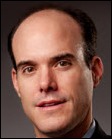
Give me some background about yourself and your job.
I’m the senior vice president of healthcare informatics at Premier. Premier, as you probably know, is the largest healthcare performance improvement alliance in the country. We’re this interesting company in that we’re owned by both for-profit and non-profit providers. We’re an extension of their organization to help them with supply chain things, consulting and performance improvement things, and also data things, informatics things.
I’ve been in the technology space for about 20-plus years. I spent the last 10 exclusively in the healthcare IT space and am a veteran of the EMR space as well as the performance improvement space.
You’re now on the HIT Standards Committee. Give some background on what that group does, what its composition is, and what agenda items it takes on.
ONC has two different committees. You have the Policy Committee and then you have the Standards Committee. They are two sets of committee which both report into Farzad. I have yet to join the first committee meeting, but they meet every single month.
The idea and intent is to get a broad-based set of industry stakeholders to provide input into ONC in terms not only policy changes, but also HIT standards changes. The last committee meeting, which you reported on, was talking about the CommonWell Alliance. What does that mean because to some of the work those groups are doing now when you have the private sector playing in going in with what the government is trying to do as well. it’s those types of issues, along with obviously the guidelines and the focus of Meaningful Use.
You said in a guest article that EHRs are too siloed and that thinking that HIT starts and stops with EHRs is a great delusion. How do you think that status should change and what role should ONC have in changing it?
That’s actually how I got started in this journey with them. I used to be with Eclipsys, now Allscripts, as you probably know. It’s interesting when you are in that environment you have this view that everything is about EMR. Then you come over to a place like Premier and you broaden your lens and you’re interacting with the C-suite at all these different large IDNs across the country. You obviously get a much broader lens.
I’ve been saying for a while now that we’ve been conditioned that EMR is the panacea. It’s an important transactional system, but it’s one of many in the provider footprint.
What we’re going to see –and you saw a little bit of this noise coming out at HIMSS — is this notion of the post-EHR era. I think you’ve mentioned it and it’s out there as well because when you start thinking about clinical groupware and other groupware and you think about the advent of mHealth and all that stuff, you are starting to see this different burgeoning of set of technologies and toolsets the various stakeholders are going to grab onto here as the industry evolves.
A lot of these core systems and really all the EMRs were architected in the late ‘70s or early ‘80s. A lot has changed. The demands — you look at usability, you look at all the different things that are coming up and bubbling up through Meaningful Use and the adoption of all these systems — maybe they are not set for the demands of the providers’ needs of the future.
The irony being that you came from a vendor that sold EHRs and now you serve on a committee for ONC, which basically pays providers to use only EMRs and nothing else. Clearly it’s not just vendors who are pushing EHRs. How do you reconcile all these groups that somehow end up recommending EHRs to the exclusion of everything else?
I think it’s tough. I think to your last question for me — why I wanted to get involved in this — is I could easily be a critic on the sidelines and throw bombs. When Meaningful Use started, one colleague and myself actually owned all the capacity planning for that EMR vendor. Literally we’d come into work and sit with our development group and go, “Oh my gosh, what are we going to do with Meaningful Use, and what do I do with all the other stuff that our customers wanted?”
I’ve had a bird’s eye view on that in terms of really thinking through, “My gosh, look what’s actually going to happen to our development capacity, and is this the right thing that our customers are asking us for?” Then you come over to the Premier side and I get that every day. The interesting thing about my job running the informatics group here is I literally am in a different C-suite discussion every single week, sometimes many. I was in three last week. You start to hear full-time, not only from the CIO’s point of view but the CEO’s point of view, CMIO’s point of view, the CFO’s point of view. You start getting all these different point of view of how technology is really interacting with where they are trying to go and take these systems in the future. It changes your perspective dramatically, at least it has for me.
People criticize that EHRs are not innovative and are monolithic, but customers will almost always, when given the choice, buy from their incumbent vendor. How will that market ever take hold if the customers would prefer to buy from the same vendors who are accused of not being innovative?
I use this analogy a lot and I’ve been criticized for using this analogy, but I will use it anyway in this discussion. Come out of healthcare. I had the luxury of doing some work in the travel industry about 15 years ago. You think about the travel industry and you think about the transactional systems in travel. They’re still in use. SABRE is one of them. The advent of the Web came along and we layered SABRE, because if you go and watch that person actually doing that travel booking for you at the gate, you look at that DOS prompt and the F: prompt that the person is doing you’re going, “I don’t even know what she’s doing or he’s doing.”
Then we created the Web. We created the Web front end and put a level of abstraction on top of that transactional system,. That was just a website, so that was USair.com if you will, but we don’t book travel that way.
So we created another level of abstraction. We created Orbitz.com and Expedia. So we aggregated the websites and then … I live in Boston and here in Cambridge they created Kayak, and so they aggregated the aggregators. Now you’re like three levels abstraction up off the transactional system, but you did that because everybody wanted a different view of the information.
I really believe — and I’ve said this many, many times — that the same analogy, because it plays out in any industry, is going to happen in healthcare. We just happen to be in that transactional mode right now. If we get to what ONC says we’re going to get to, 85 percent penetration by the end of the year, that would be great in terms of that core base level. But how do you get to that next point? You’ve got to get people to start thinking about what’s that next level of abstraction tool sets that help them take it to a different place because they have different views of information.
If you have an ADT system that’s driving to a patient list for the day or a rounding list for the day, is that the right thing to do? Or do you need to round up a set of specialists that round up a set of diabetics? That’s not really a registry. It’s really much more of a workflow-based component of how you pull that information together and try to get the outset and the outcomes that you actually want.
The travel industry had somewhat of a luxury in that SABRE was a monopoly for the most part, and all they had to do was layer on top of SABRE. You’ve got thousands of EMRs out there. What are you going to layer on top of?
Everyone is different and that’s the complexity here. The next 10 years are going to be the most interesting years in this space, because how this plays out I think is still anybody’s guess. You have all these payers coming in and spending all this money on HIT assets. They run the gamut. You got United that has high acuity solutions — they bought the Picis assets all the way to HIE assets. You’ve got providers standing up population health companies. You’ve got EMR guys trying to build up data warehouse businesses. I think it’s anybody’s guess still how it really plays out.
To your point, because there was no standardization, you have what we have. Another thing I say often is I think we have capitalism running amok in a system that really needs a little bit more standardization. Whether the government can do and pull us out of that is still, I think, TBD.
It worked without the government’s involvement for Visa, when they convinced banks it was in their self-interest to connect to a neutral network and exchange information. Is there any potential that that’s the platform that you build on top of?
Yes. I think it’s a great point. Whether it’s something like the Policy or the Standards Committee or ONC or Farzad going, “Hey, this is what we’re going to do. We are going to round everybody up to connect that.” Or it’s something like CommonWell, assuming that everybody belongs and everybody is invited to belong. That’s the thing.
There’s got to be some sort of polarizing collaboration event or set of events that starts that next level. That’s what we’re talking about. That’s really where the next step of innovation is. We’ve done some innovative things in this space, but I don’t think we really have done what we could do potentially.
When you start looking at what’s happening in the portable app area, that’s where interesting things are going on. I’m a runner, so I use one of those applications all the time. I have a Basis watch which tracks my heart rate every single second. That’s real data. I always joke with a lot of our folks “Here is my real EMR — it’s sitting on my wrist.”
When you look at groups that had good ideas, like the SMART group, I don’t know that they’ve done a whole lot except to announce that everything should look like an app. Do the EHR vendors need to yield to allow those app vendors to connect, or can those apps be built without EHR vendor cooperation?
That was a big part of our push at Eclipsys right before I left. If you go out into your customer base and you really look at it, if you look at all those great academics that Eclipsys had and still have some but they have lost a few, where was all the innovation coming from? The innovation was coming from people stitching on to that rich documentation and CPOE system all sorts of interesting little things. You can call them apps, you can call then whatever, but that’s where the real innovation was taking place. It wasn’t taking place in the four walls of the development shop at Eclipsys. That was running the core infrastructure.
That’s why we moved to that Objects Plus open layer that we decided to go do at the time. Then finally as they got into Allscripts, they realized wow, that’s the platform that really we need to think about, and more importantly, compete against folks like Epic and Cerner.
That’s still TBD to play out, but I’m a big believer, as you can tell, in openness. I think whatever you call it, this space to move to the next level has to be open. Even my point about the wristwatch. It’s really interesting and I can analyze it, but unless I pull up the website in my physician’s office, we’re not going to go much farther than because no one is letting these folks in.
The only pressure a vendor feels is from customers or shareholders, neither of which has a lot of vested interest. The customers don’t seem to be demanding and maybe can’t even define what openness means. Has there been enough education of customers about what should they be demanding from their vendors to push from inside instead of outside?
I don’t think so. That’s part of the reason I came to Premier, which I would say was like a sideways move outside of the vendor community. When I go talk to my board at Premier, I’m talking to all my members, all my customers. We’re trying to educate them into that path, which is, “This is what you really could do with all this information because we’re such a big data company and we have so much data.” There are different things that we can do there.
As more and more people start pushing on this, the idea that this group and this industry actually start understanding what it could become is going to be very viral and very fast. I think they are going to get to such a tipping point in the next five to seven years that this thing will flip on its head and everybody would be like, “Wow! I can’t believe we got here.” All the people who thought these certain encumbered vendors were locked in for good — I think we’ll see how that plays out.
What things excite you in the non-EHR world that could be a vital component?
When you look at KLAS data, it that says that 60 percent of providers are either going to replace an existing data warehouse or build a new one. They might not be building your father’s Oldsmobile data warehouses. They might be building a next generation for that abstraction layer point I was making. That starts giving you an infrastructure if they do it in a certain way, to be able to have openness and to be able to use the data. It’s all about the data.
The Eclipsys data was funny when some of the burgeoning stuff like Amalga and that stuff was coming out. It was funny to watch that all take hold, because people didn’t know how to react to that. They wanted to have everybody locked into those transactional systems. But the fact is, when you pull back on the transactional systems, you’ve got a GL, you got an MMIS system, you’ve got an EMR, you’ve got 40 other different transactional systems in a provider footprint.
How do you get the information out of that? How do you open it up? Then how do you expose it to a bunch of people to do a lot of things with? If we are going to move to population health, even the big payers don’t have enough money to keep up with the use case demand.
How will the EHR vendors react to being forced into a transactional system role? Are they getting blindsided by this, innovating because they have to, or just planning to buy up the competition to make sure nothing is shaken up?
A little bit of all of what you said. You already seeing the movements. You saw Cerner do the wellness move. You’ve seen Cerner start to move on the cloud-based analytics. You’ve seen Epic doing Cogito. They are all seeing this coming — it’s just how do they let it play out? They got to preserve the run rate revenue.
I think the math changes, too. The days of investing $250 million on an EMR are not that long left. There’s going to be a whole different equation for value.
What I find fascinating about this is that some of the stuff that you’re seeing in population health right now – it’s very nascent and everybody is being dashboarded to death. But the math is so fundamentally different in terms of the dollar signs with that work compared to what the EMR transactions were.
That’s what you saw on ERP, too. If you think back to the SAP and Oracle and PeopleSoft days you had these huge dollar amounts. Then all of a sudden you got a disruptor like Workday come in, and Workday is at a difference price point. It’s an op-ex rather than a capital cost, subscription based, a cloud variant. It’s just different. I think the same thing is going to take hold here.
Offering the subscription model didn’t seem to help Eclipsys much. It doesn’t seem that the market cares as much about that as you would think. People are happily writing those hundreds of millions of dollars checks and can’t be dissuaded that that’s a bad idea.
[Laughs] That was a different set of issues for another time over a drink.
What do you think the biggest difficulties are going to be, both for healthcare in general and healthcare IT specifically, in getting people to think in terms of public health rather than episodic care?
These CommonWell folks are onto something. This is not the first time – it just happens to have a lot of press. There were a lot of other variants. There was Intermountain, Geisinger, and a few others trying to do this underneath the covers of something else a while ago. But this idea of privacy and this idea of a national identifier … if you think about the amount of work we’re going to have to do in population health — I know it because we’re doing it right now — to just connect John Smith.
If I take pre-adjudicated claims, I take EMR data, and I take post-adjudicated claims and I want to attach all that to John Smith, we need enormous amount of fuzzy logic work. That is enormous amounts of expense. Where you look at Facebook, you look at a credit card transaction log … if you give me those two feeds, I can probably tell you your health status. But now we’re going to spend all these time arguing about health and healthcare data in a different light, when in actuality, all the other ways that people work in an online medium, they are actually exposing that same information — they just don’t know it.
This is what’s going to be the biggest issue for us to get over that hump, and it may actually delay us by five to seven years longer than what I even originally suggested. Until you get to a generational gap, which is the other side of this privacy debate… if you take a 25-year-old, take somebody from the bridge gap, and then take somebody who’s 50 or 55 — different views on privacy. This idea of data liquidity — the stuff that Todd Park talks about, the stuff that others have talked about in the past — if you want to get to that state, you got to change the public persona of healthcare data. That may be a national identifier. That may be a lot of different things that are sort of being noodled around.
There are thousands of times more resources being devoted to trying to comply with screwy government payment policies that are so arcane and illogical that no one can even understand what they mean. If the government is so interested in having everything be transparent and interoperable and easy to understand, shouldn’t they first trash the payment system?
Yes, absolutely, and that’s what they’re doing. If you think about all the government is doing, they’re kind of are, even though we’re all being cynical. They are pushing and pulling right now. They’re pushing you because they’re going to cut you to death. They are going to cut you with all these illogical payment approaches, which are what’s going on, all the way from SGR changes to PQRI.
Then they’re pulling you through CMMI in different programs. Whether that’s a test cycle of MSSP, whether that’s a test cycle of a pioneer program, whether that’s a commercial thing that’s doing on the private side, we are actually in this fight right now. The question is, is the government going to have the perseverance to continue to pull people into that mode?
I live in Massachusetts. It’s a nice place to be from a test stage standpoint because we adopted a global budget plus a CPI cap. I think the governor signed it two or three months ago. We’re already playing it out over the cap.
At Premier, we’re a big believer — and I think the members are in this position — that we’re going to be a global payment. It’s just a matter of when. It’s going to be a tough battle in that push and pull sequence until we get there.
What is Premier’s position on how healthcare IT is going to evolve?
We’re doubling down heavily. We’ve been in this space for 15 plus years doing informatics all the way back to the days of running tape and taking data out of transactional systems and turning it into information for providers.
Our view is that it’s a critical component of this transition. Having said that, I think the other side for us is just the pure social system changes. The social system change, what we see loud and clear — we run a pretty extensive ACO network and what we see pretty loud and clear — is just what it’s going to take for these members in these organization to transition from the business they’re in today to the business they need to be in tomorrow.
And just a stupid subtle point – it’s not that stupid, but it is subtle — how do you even think about asset allocation? How do you think about building a new cancer tower comparatively to maybe investing in nursing homes or building out your SNFs or your behavioral health footprint?
It’s a really interesting discussion going on right now at the administrative layer of providers. How do you think about this asset allocation? Then, how do you think about the differences of the people you have within that to make this transition?
The ones that we see are the typical ones. The ones that have a health plan understand how to think like a payer as much as like a provider. Kaiser is the blue chip here because they first think like a payer and then they adapt into the provider care footprint. I think a lot of what we see –we’ve got Geisinger as a big member, we’ve got SummaCare and Summa in Ohio is a big member — those folks have big health plan footprints. It’s interesting to watch them as they go into this change.
Do you have any concluding thoughts?
It’s interesting to finally talk to you. I think I’ve been following you since you started. I can’t believe it’s been 10 years.
It’s just going to be an interesting time for all of us. Some of the best days are ahead of us. Our ability to attach to a much more open framework and getting people still be able to make a dollar — because I don’t want to push the vendors out of the space – we’ve got to get to a place where people can interact together and we all can do what we’re here to do, which is fundamentally transform the health of communities. That’s the game here. It’s not maximizing your shareholder.
Comments Off on HIStalk Interviews Keith Figlioli, SVP Healthcare Informatics, Premier



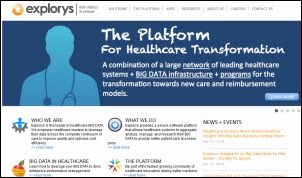
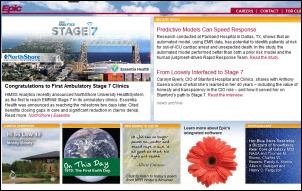

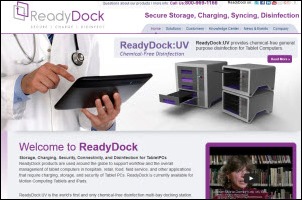





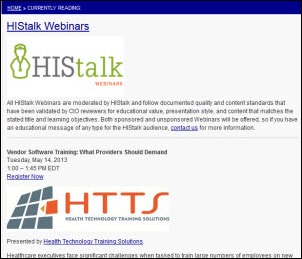


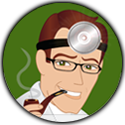



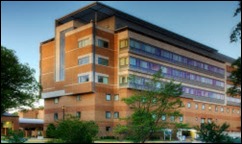

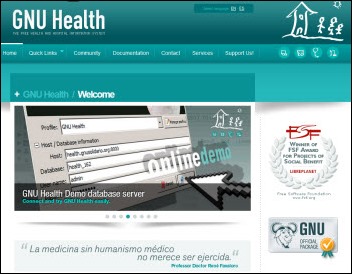


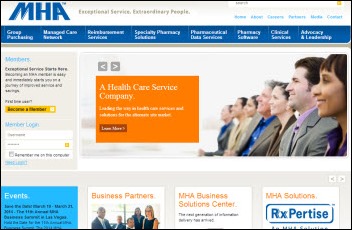










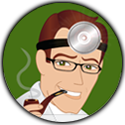
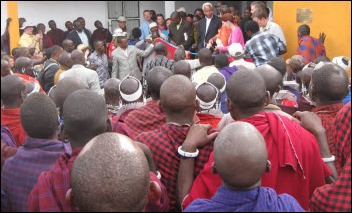





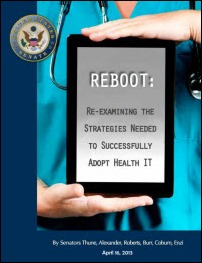



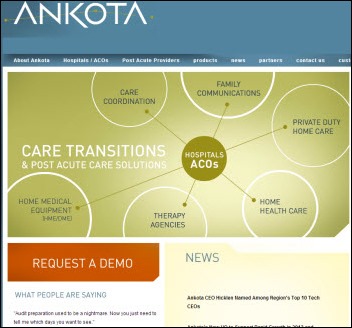


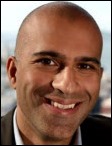
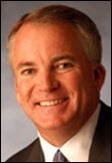
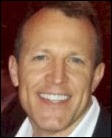
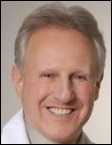
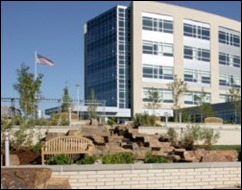

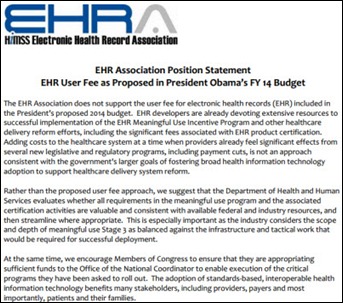
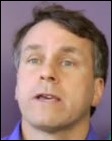
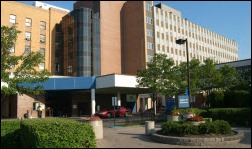

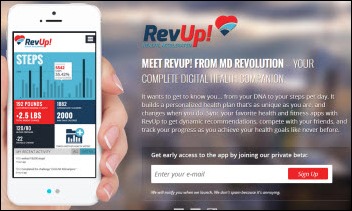




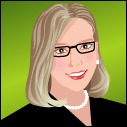
The CEO sentenced to jail for massive healthcare fraud will get pardoned in a week.